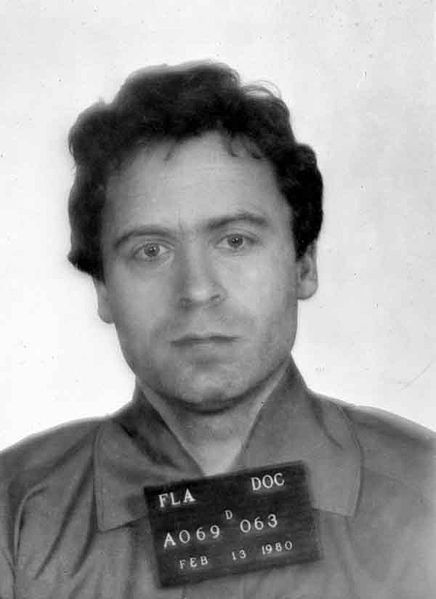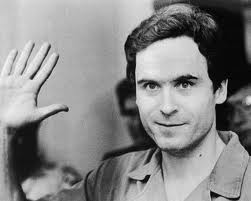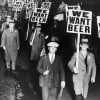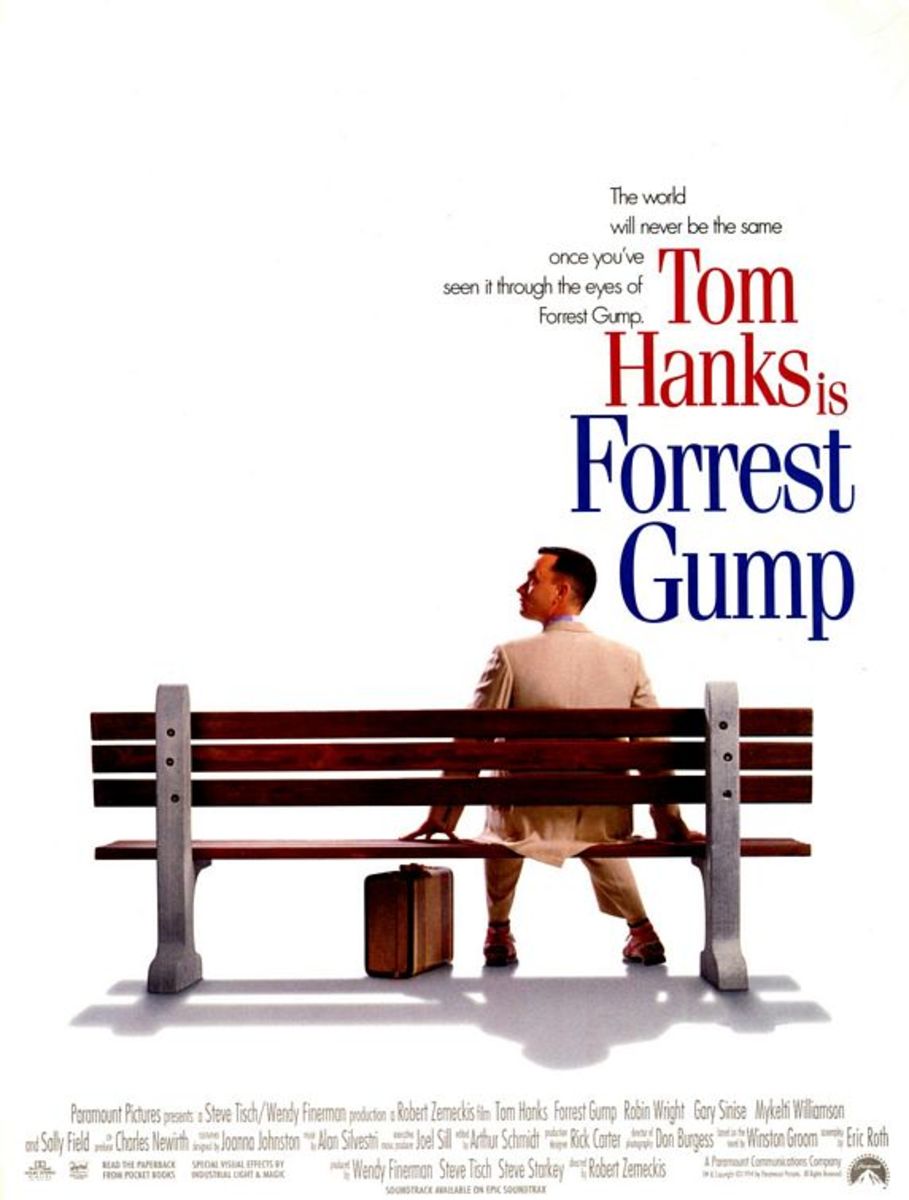Ted Bundy: Exploits of an American Serial Killer

The Stranger Killer
Ted Bundy once walked into a bar in Michigan, among a crowd of people, and sat down for a beer while watching the Rose Bowl. At the time, he was being chased by the police, and was a member of the F.B.I.’s most wanted list. Despite being the only person in the bar not rooting for Michigan, and being a wanted felon, no one noticed or remembered thinking him unusual. From there, Ted stole a car and drove south, eventually arriving in Florida where he would kill three more, including a twelve year old girl named Kimberly Leach.[i]
Serial killers have often been portrayed as moral aliens who would stand out in a crowd. They're thought of as being incapable of “normal” contact, completely anti-social creatures, who kill without remorse. The killer is usually seen to be completely devoid of morals or principles and, assumed to be suffering from some form of mental illness. We all like to belief that sane people couldn’t do what serial killers do. Explanations are required. We have to consider the childhood, and the teenage years. We have to find when the seed of the monster was planted. While this sort of thinking is prevalent it represents nothing more than stereotypes, sometimes accurate, mostly inaccurate. Theodore Bundy, who is perhaps the most infamous serial killer in American history, is an individual who defied the traditional stereotype, and ironically enough, shaped a newer one.
[i] James Alan Fox and Jack Levin, Mass Murder: America’s Growing Menace. (New York and London: Plenum Press, 1985), 182.

For several years Bundy was able to blend into each and every environment he entered, make friends, earn a living, and ultimately kill. He was able to pass through police roadblocks, even when the police were looking for him. He crossed state lines at will. Most people who met him, described him as charismatic, and friendly. This includes the reporters who spoke with him while on Death Row. The impact that Ted Bundy has had on society is felt even today, and is reflected in the sheer volume of work dedicated to his exploits. No other serial killer captured America’s imagination like Ted Bundy, for better or for worse, he has been immortalized. Plus, he’s interesting.
Young Ted
Ted Bundy was born in 1946 and had a pretty normal childhood. As Ted grew up he was strong in academics and was ironically somewhat of a health fanatic. He attended undergraduate college at the University of Washington where he studied a number of subjects, ultimately settling on abnormal psychology. While Ted was at the university, he also held a job working as a volunteer with the crisis hotline/suicide prevention line.[1] At first this might seem a bit out of place for a future serial killer, but in retrospect it makes a lot of sense. The radio offered him an opportunity to talk to people who were troubled, and in need of very personal contact, while at the same time allowing him to remain detached from any true personal connection. For Ted, it was like looking into a window of someone else’s life.
Ted was once honored as a hero by the Seattle police, for his effort to catch a purse snatcher. The following year, Ted jumped into a lake to rescue a drowning three year old child.[2] While each of these actions is admirable and indeed praiseworthy, Ted did not do them because he was a virtuous citizen, but rather because he liked the idea of controlling someone else’s fate. (“Normal” people accept that they cannot control another person’s life, Ted could not) Ted was politically active, and attended the Republican National Convention in 1968. He was the chairman of the committee to reelect the then Governor, Dan Evans. Later, Governor Evans wrote Ted a letter of recommendation so that he could attend Graduate Law School at the University of Utah. Ted also received a glowing letter of recommendation from a Professor of his at the University of Washington.[3] Indeed, Ted was something of an “all American Boy” at this point.
Murder, They All Wrote
No one except for Ted knows exactly when the killings started. The first victim to be pinned to Ted was a young woman named Lynda Ann Healy.[4] Lynda was an attractive, twenty one year old woman who disappeared in February of 1974, two years after Ted had graduated, but before he moved to Utah for Graduate School. It took the police over a year to find the body. During the ensuing months after Lynda’s disappearance, Ted killed at least seven other women in Washington, and at least one in Oregon. In one particularly bloody month, Ted killed three women without leaving the slightest clue to the police. Possibly the most amazing part of all of this, was that Ted had been in two serious relationships, simultaneously, without causing either woman to believe that something was wrong. Ted had dated a young, and affluent woman named Diane since freshman year at Washington. In 1974, after graduation, he proposed to her, without her knowing that he was already engaged to Elizabeth Kloephler.[5] Having his choice of brides, Ted chose Liz, and the two settled down together in Utah. After Ted moved to Utah in mid 1974, the killings in the North West stopped, while similar style murders began to appear in the Salt Lake City area.[6]At first, the various disappearances and murders were not seen to have any connections. However, as the number of unsolved murders continued to rise, a group of investigators from various jurisdictions got together and started examining the similarities.
In 1975, a woman named Caryn Campbell was found dead, after having been sexually assaulted and bludgeoned to death. At this point, the authorities turned to Theodore Bundy, who was in the beginning of a fifteen year sentence for kidnapping a young girl. The authorities had Bundy extradited to Colorado for the new trial. At this point, Ted had already successfully killed at least sixteen women across four states. The police had no idea. There wasn’t the huge media uproar that one thinks of when a killing spree is being masterminded. This is largely due to the fact that no one knew Ted was a serial killer. The murders and disappearances were being covered locally, and to a lesser extent, regionally. Each new murder was a new story, but they were seen to be ordinary and unconnected. After this point however, Bundy would make primetime news.
The Legend
While on trial, Ted managed to jump out of a window in the courtroom, and escape into the outlying woods. This had all the ingredients to create a great story. It was dramatic, daring, unexpected, and unusual. Ted was merely a common kidnapper under suspicion of a single murder, and yet he attracted more attention for his cunning escape then he previously had for all his murders combined. Ted was of course apprehended again, but amazingly managed to escape again, this time from jail. On December 30, 1977, Bundy climbed a rope made of bed sheets up to the ceiling of his cell, where he shimmied his way through the ceiling panels and fled Colorado.[7] Ted’s exploits landed him on the F.B.I.’s most wanted list. This is really the start of the Bundy legacy.
In Colorado, Ted achieved something of folk hero status. As one person later recalled for a book, “Aspen reacted as if Bundy were some sort of Robin Hood instead of a suspected mass murderer.”[8] Local radio stations played songs such as “Ain’t no way to treat a Lady” and local restaurants served the “Bundyburger.”[9] As a hunted man, drawing more and more attention to himself with each day of freedom, more and more of Ted’s past was coming to the surface. Despite all of this, Ted escaped to Michigan, past roadblocks and police, without incident.
By the time Ted reached Florida he had gone through various aliases, and was wanted by the F.B.I. Various physical descriptions of Ted were put out, which were never the same twice. Indeed, even though he was apprehended in Colorado, the police were still not entirely sure of what he looked like since he was so adept at changing his physical characteristics. All in all, Bundy was a handsome and “normal” looking guy. This meant that the F.B.I.’s wanted poster was left with the very general description, “has worn glasses, false mustache and beard as disguise in past, left-handed, can imitate British accent, reportedly physical fitness and health enthusiast.”[10] Not a lot to go by. The result was that Ted was able to ‘restart” life in Florida.
With no money, no job, and no real identity, Ted was forced to make a living stealing wallets and purses from college students. From this revenue, he managed to find lodging and eat in all the finest restaurants in town. By this time, the media was beginning to really grab onto the Bundy story, with local and regional papers reprinting their unsolved murders to a national audience. However, there still wasn’t all that much to say as there was not yet even a single piece of physical evidence connecting Bundy to any of the murders. Most of Bundy’s victims were either found decomposed in the woods, or never found at all. The building case against Bundy was in fact mostly composed of circumstantial evidence, gas receipts showing he was in town, witnesses who might have seen him in the area, and so on.
Burnt to a Crisp
Theodore Bundy has left a legacy as arguably the most infamous serial killer in modern times. Much of that legacy has to do with the massive amounts of media coverage that Ted received. Few other criminals have received as much continuing coverage as Ted Bundy. In 2002, a new movie about Ted was released, and even today, there are new publications being worked on. It is difficult to say exactly what the attraction to Ted is, and it may in fact vary from person to person. Some saw him as evil, but as sort of an evil genius who was able to avoid capture for years, and thus had some desirable traits. Others saw him as evil personified and eagerly awaited his execution. Most probably just thought the entire thing was an amazing story. After all, it isn’t very often that a criminal is able to twice escape the law, and continue to do as he or she pleases.
Ultimately, Bundy was arrested in Pensacola Florida after a minor traffic infraction. Whether or not it was his goal is difficult to say, but there is no denying that Ted fed his own legend. During his interrogation, Ted claimed that the number of killings might be in the hundreds and spanned across six states. To this point the Florida police had suspected Ted of no more than thirty six murders across five states, and were only really certain about nineteen.[11] The media had a field day with this. For years the police had been outsmarted and shown incapable of finding Bundy.
Bundy acted, in part, as his own lawyer at trial, attempting to assist in his own defense. Although he was found guilty, the judge did have this to say to Ted, “It’s a tragedy to this court to see such a total waste of humanity. You’re a bright young man. You’d have made a good lawyer. I’d have loved to have you practice in front of me. But you went the wrong way partner...”[12] Although Bundy was suspected of at least three dozen murders, and possibly more than a hundred, he was only charged with nineteen. This was in part due to lack of evidence, and in part, due to the fact that it would have yielded the same result.
Ted managed to make headlines while in prison. While on death row, he conducted interviews and met with psychologists. Through these meetings he revealed an obsession with pornography that he had since he was a child. Some were quick to declare pornography the cause of Bundy’s actions, while others were not convinced. As one columnist put it, “As Bundy told it, he was a good, normal fellow, an ‘all American boy’….. a hatred of women virulent enough to claim fifty lives does not usually spring full-blownfrom the reading of obscene magazines.”[13]
On January 24, 1989 Ted Bundy was executed. Between the 20th of January and the 28th of February, over 280 Bundy related articles were printed in only four Florida newspapers, the Orlando Sentinel, the St Petersburg Times, the Miami Herald, and the Tallahassee Democrat. While the papers are all from Florida, they represent the full spectrum of politics from liberal to moderate to conservative. The Tallahassee Democrat alone published fourteen articles the day after Bundy’s execution. Major publications in other regions of the country only ran an article or two each.[14] National television coverage brought the case of Ted Bundy into National prominence, but it was of course more widely covered in the regions where Bundy killed. In fact, Bundy was on the front page of several Florida newspapers everyday for a week, around the time of his execution. Most of the publications dealt with one of two issues, the first being capital punishment, the second being how many victims Bundy killed, and where the bodies were hidden. Some felt that the justice system should not bargain with Ted in exchange for him revealing where the bodies of his victims were, others who were opposed to capital punishment anyway, felt it was a greater sin to allow the remaining victims to rot away in the woods without a proper funeral.[15]
Bundy’s death was followed by a mixture of vengeful glee, and resentment at the criminal justice system. On the whole, almost everyone, whether they supported the death penalty or not, simply felt relief. The threat was over, and justice was served. In Florida, reporters recalled seeing shirts saying “Burn Bundy Burn.” Hundreds drank and sang songs and celebrated the execution. Radio stations also took requests and played a popular song called ‘Bye-Bye Ted Bundy’ set to the tune of Don McLean’s famous ‘American Pie.’ Many people lined the streets of the prison the day that Ted was executed wearing shirts such as “Bundy BBQ” or “I like my Ted well done.” while singing songs with lyrics such as “He bludgeoned the poor girls, all over the head. Now we’re all ecstatic, Ted Bundy is dead.”[16] By the time of Ted’s execution, he had already been the subject of a made for television movie, five books, and tons of articles. After his death, the publications continued, and in April, a university had a showing of Ted’s last interview from prison. In order to advertise for the event, the university made posters which read “A Man with a Vision. A Man with Direction. A prophet of Our Times…. Bundy: The Man, The Myth, The Legend.”[17]
[1] Seltzer, Serial Killers, 10. [2] James De Burger and Ronald M. Holmes, Serial Murder, Vol. 2, studies in Crime, Law and Justice. (London: Sage Publications, 1998), 70. [3] De Burger, Serial Murder, 122. [4] De Burger, Serial Murder, 123. [5] De Burger, Serial Murder, 127.[6] Gerhard Falk, Murder: An Analysis of its Forms, Conditions, and Causes. (North Carolina and London: McFarland & Company, 1990), 81. [7]Falk. Murder, 83. [8] Jane Caputi, “The Sexual Politics of Murder,” Gender and Society, Vol. 3, No. 4, Special Issue: Violence Against Women. (Dec., 1989) [9] Caputi, “The Sexual Politics of Murder” [10] Seltzer, Serial Murder, 13. [11] De Burger, Serial Murder, 131. [12] Fox, Mass Murder, 69. [13] Caputi, “The Sexual Politics of Murder” [14]Anthony J. Paredes and Elizabeth D. Purdum, “Bye-Bye Ted…’: Community Response in Florida to the Execution of Theodore Bundy,”Anthropology Today, vol. 6, No. 2. (Apr., 1990) [15] Paredes, Bye-Bye Ted [16] Paredes, Bye- Bye Ted [17] Caputi, “The Sexual Politics of Murder”



